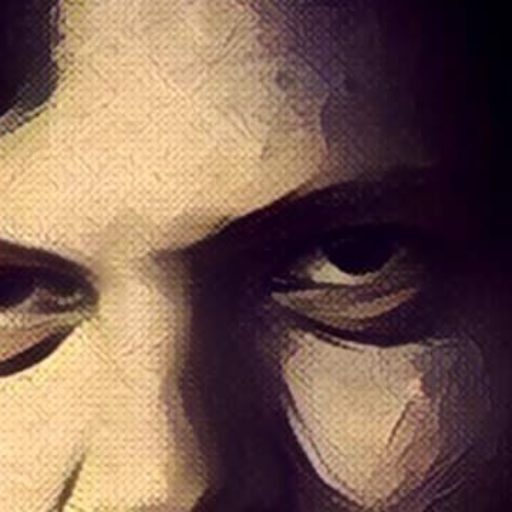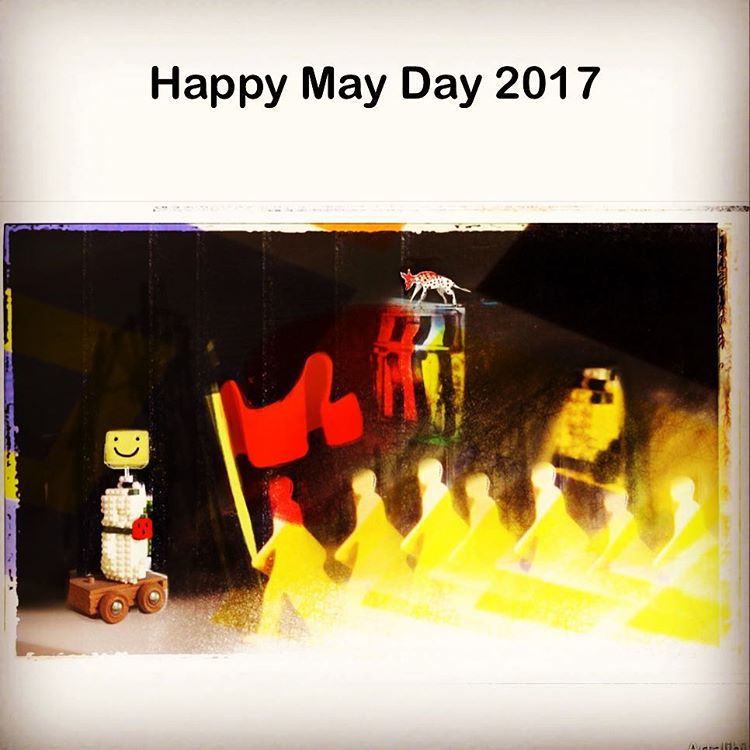Part 1. Boredom
This is a ramble to analyse my long term problem with art processes: Boredom.
After years of accumulating art materials gathered over my other working life housed in my tin shed I am now faced with the inevitable challenge of actually using them.
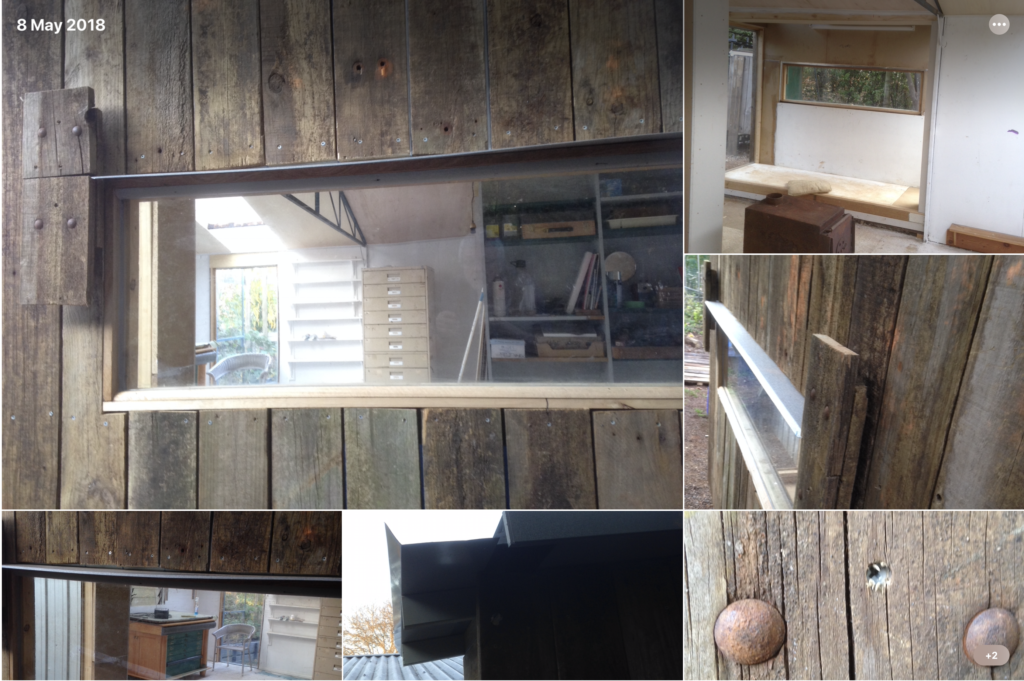
This leads my rambling thoughts to rethink the discipline of art and what it means to me now.
Artists who devote their energies to master technical excellence follow a noble cause and one that I am sure is satisfying. Developing a visual style, with a recognisable stamp of authorship by familiar techniques and favoured subject matter, is a fine endeavour.
My training as an architect valued problem solving using space and time to design buildings or towns. Chasing creative solutions, by testing various options and then refining to best fit the client’s requirements. Maybe I say this because I was not trained as a painter or printmaker. I have drawn and painted for other reasons. Now this has changed.
So where I’m at, is trying various techniques, experimenting, working with what I’ve got, melding materials and using equipment readily available in my tin shed.
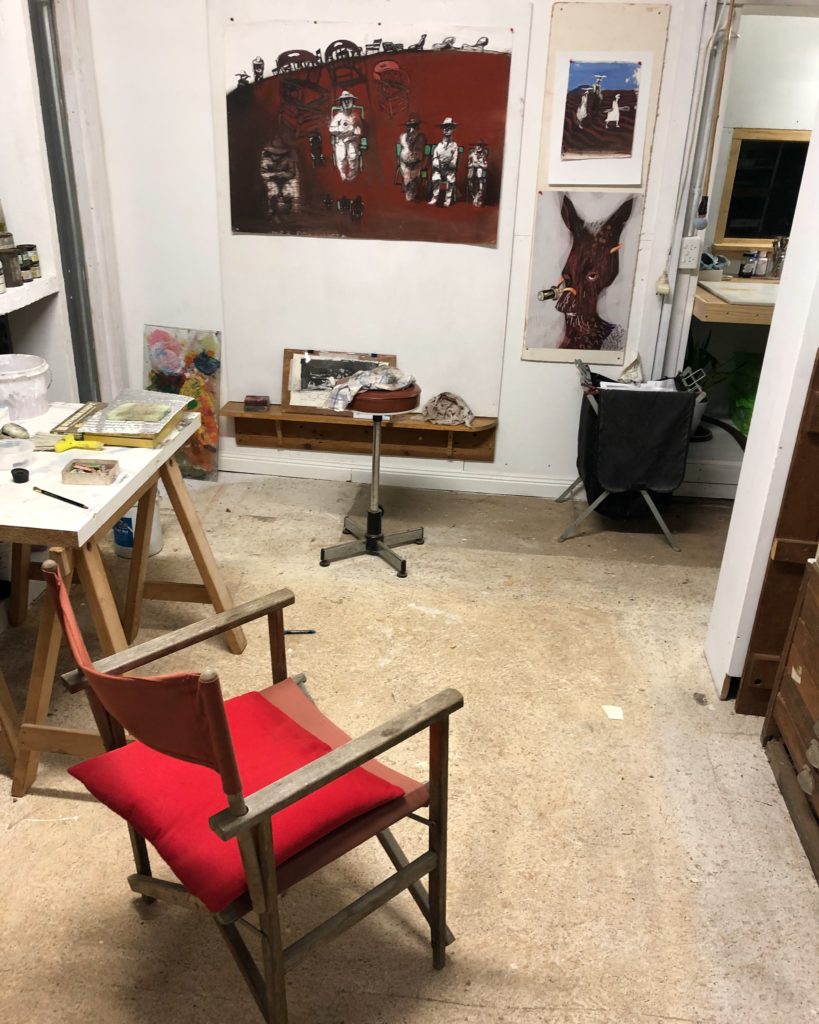
I am always looking for mediums that sustain my interest, a corollary to this is that I’m always looking for short cuts to achieve an instantaneous result. The crux of my problem, but, and there always is a but, I enjoy the serendipity of an accidental line or ink blotch when searching the unknown making images. I fib a bit-There is some pre planning, but usually no preparation drawings or gridding and no tracing. It’s a crash through or burn approach.
To have the clarity of how a work will turn out technically – the vision firstly imagined in the head, then deconstructed and reassembled through an art process is a challenge in itself. The dragging self doubt, or avoiding curiosity to break away from the preplanned has to be kept at bay as the work evolves in its remaking from head to hand to surface.
Experiments can avoid the necessity of deciding on subject matter. An experiment still requires content so the aesthetic of the image can capture the interest of the viewer. There is choice of course in colour, placement (composition), size and relationships of shapes (mass), marks (lines) and its uniqueness of the medium. The subject matter must mater to me as an intellectual exercise (support social justice), hold personal meaning, explore the human condition and salve my aesthetic curiosity. (Note to self: headings for later).
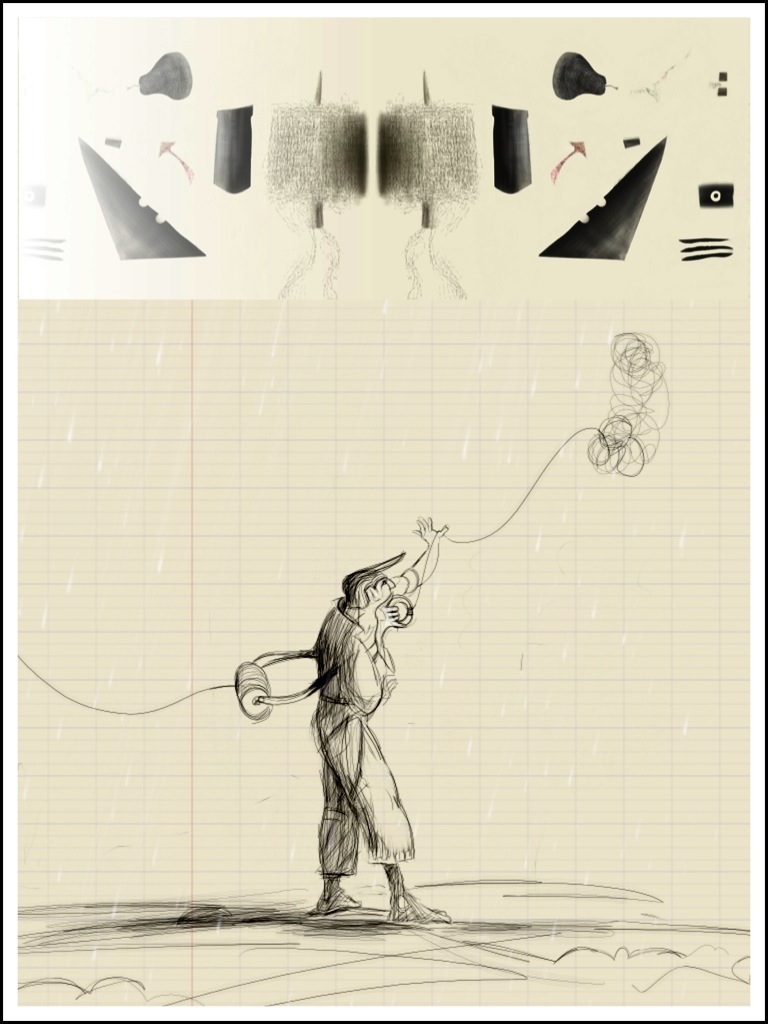
This brings me to the initial cause of this word diversion: What to do with 1000 or so digital drawings tucked away on iPads and iPods drawn over the last decade? So many doodles and drawings trapped within decaying hard disks
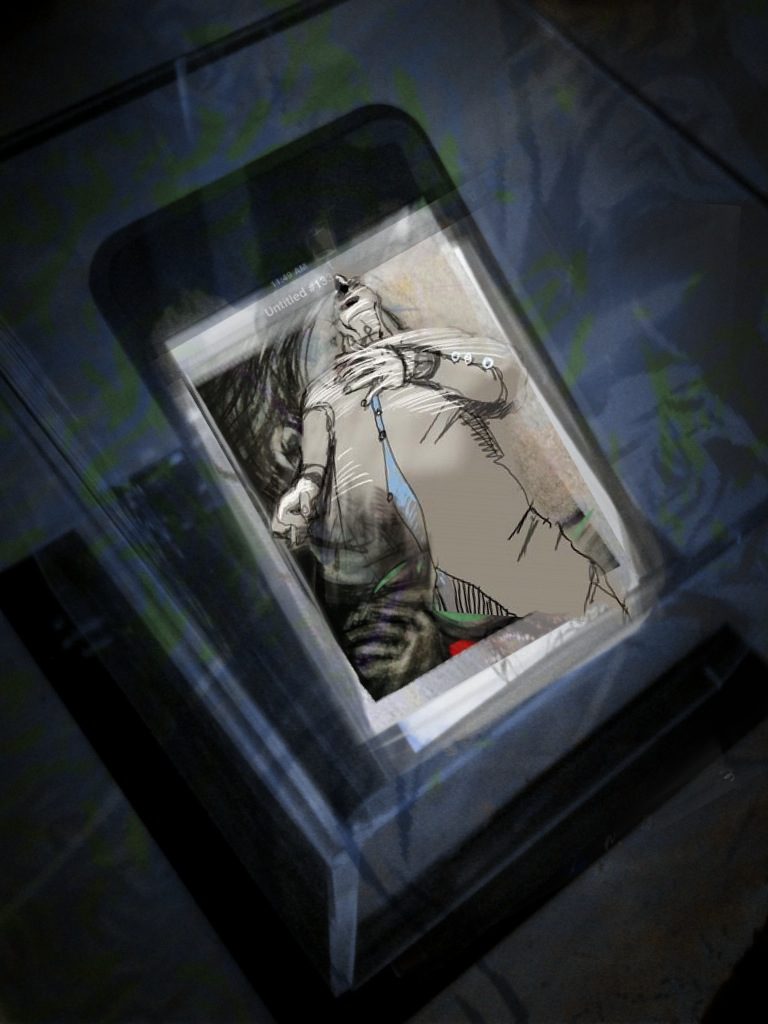
And some harvested on the web by invisible algorithms curating with Dada sensibility of a brick.
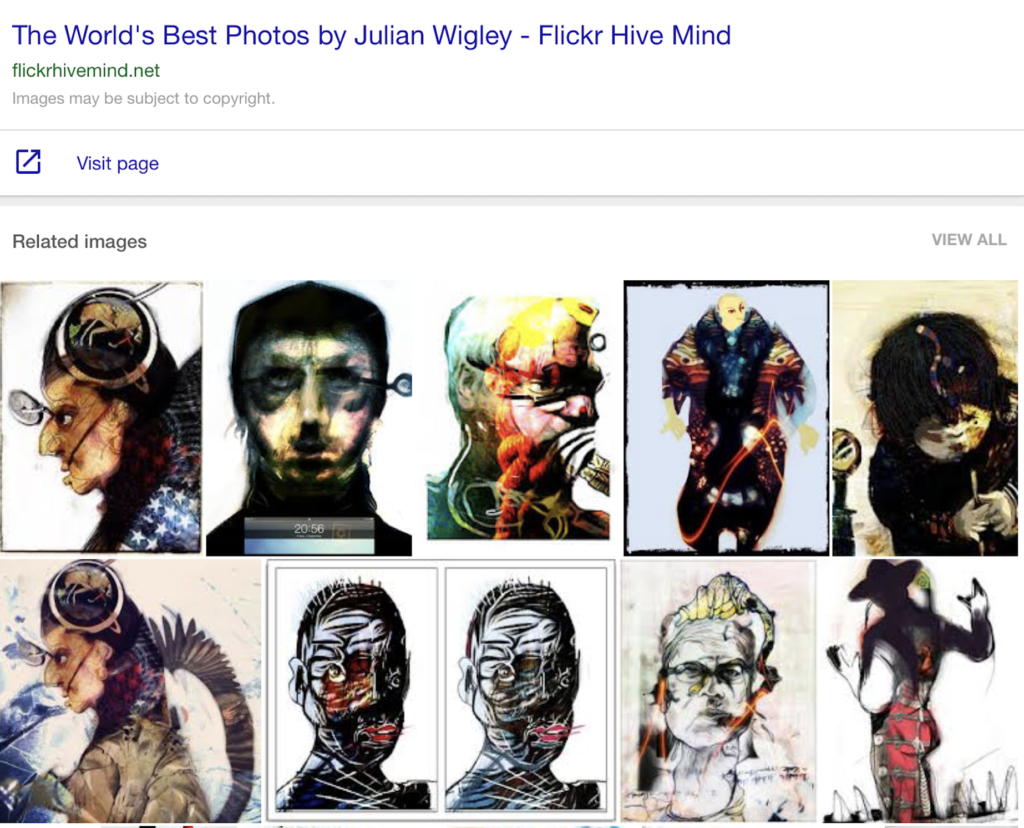
How do I remake them, to my satisfaction, into non digital images? Do I bother ? Do I make editions and destroy the raw data ? Do I continue to make drawings without any thought to their afterlife? Do I forget painting with light and pixels and return to the wet world of pastel, paint, inks, water and graphite? Or do I keep exploring ways of bringing the wet and dry worlds together in my own way?
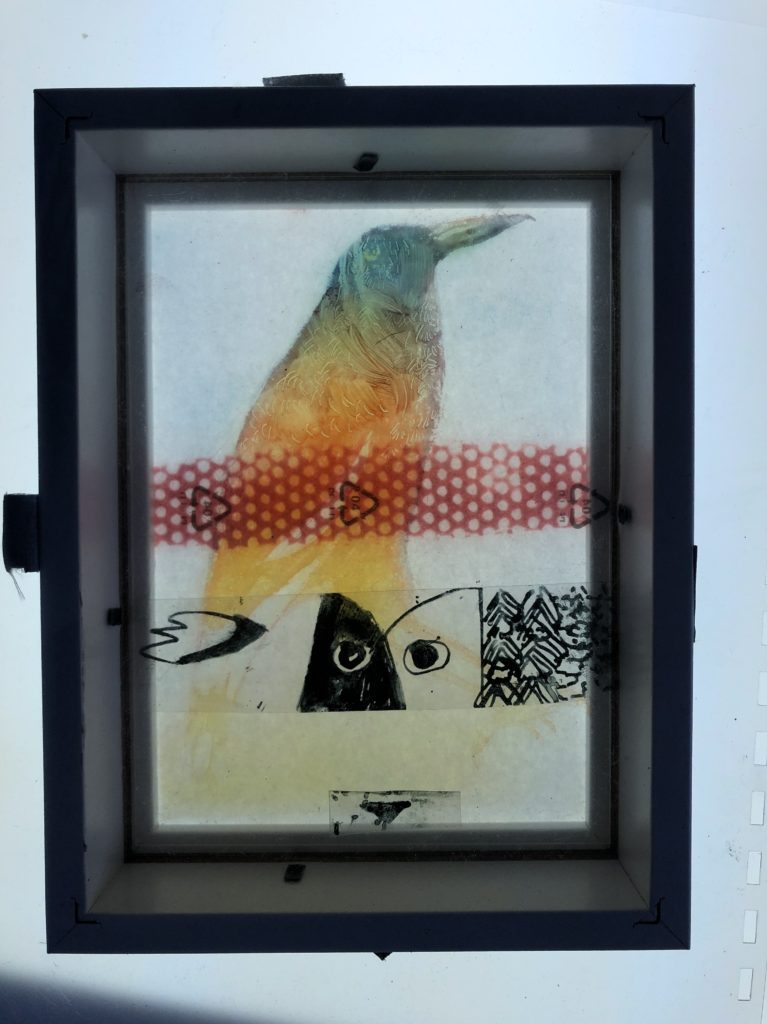
So there we have it, explore and create. Some recents pursuits include:
The use of printed digital images on transparent film layered within a frame has been an interest since watching the multiple screens used in early animation and my own use of projection and cell animation in the late 60’s.
The Bird combines a simple mono print on Japanese paper, digital transparencies, and an ink drawing on acetate sheet, all layered within a box frame.
Some other approaches to give digital images value through uniqueness included transfers of inkjet prints to a prepared acrylic grounds using a rubbing technique.
The Old Knight below, is a unique print of the original digital drawing using the wet paper transfer technique of an ink jet print grounded into a layer of acrylic medium brushed on art quality paper. It has been reworked with pastel and fixed with protective coatings.
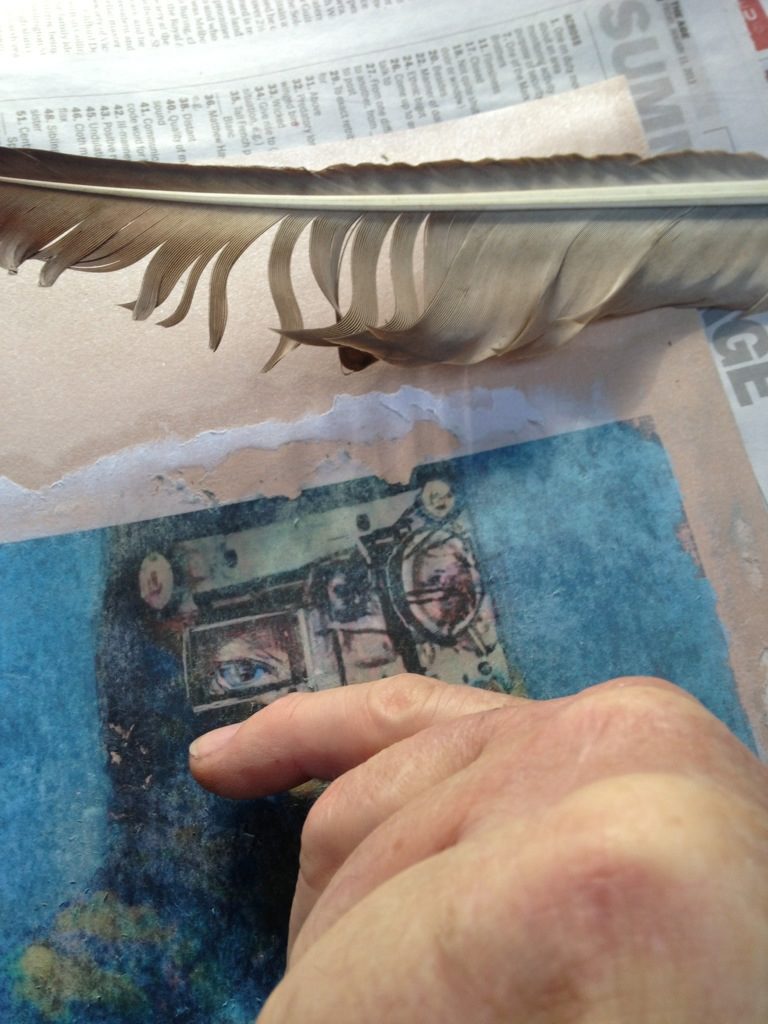
The image below is self portrait in the making using several transparencies composed within a constructed cardboard shaped frame.
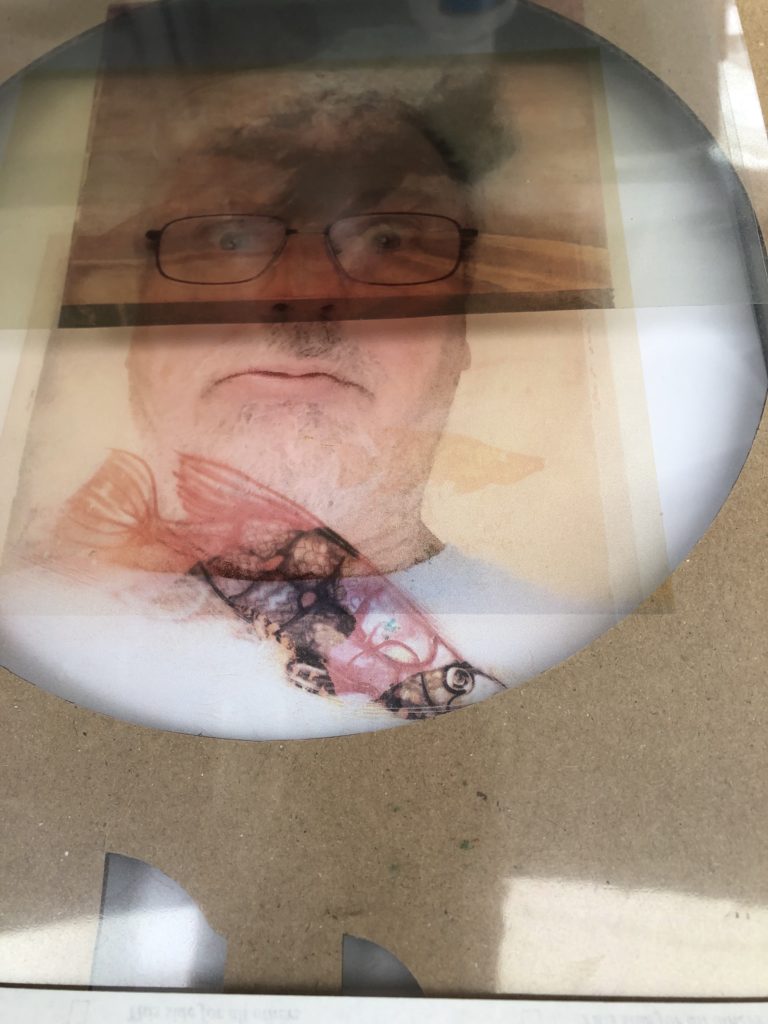
You have to be careful not to get carried away with playing with digital devices and the ease in chasing images. The devices can feed an inventive curiosity when searching for meaning and imagery. On the other hand it can be fun and a quick way to doodle an idea.
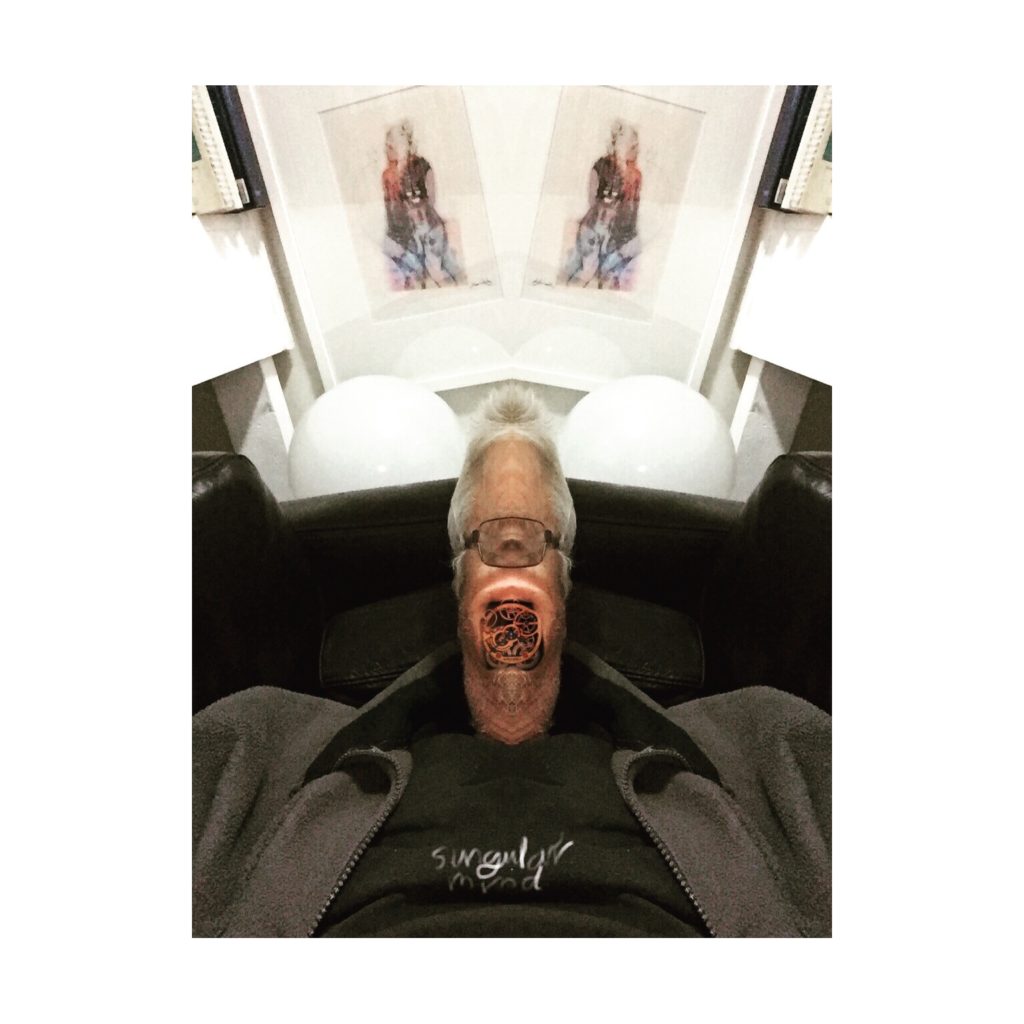
Then there is the non digital world of the past. The love of ink, black lines on white paper. Pastel dust and spray!
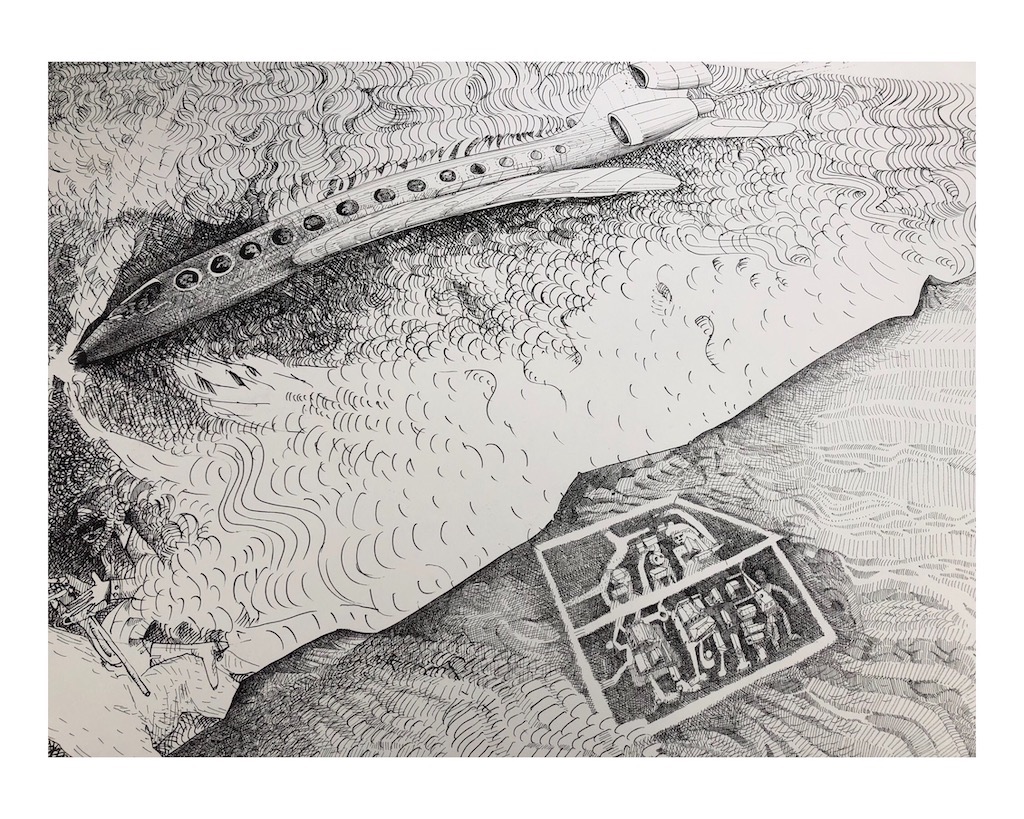
The joys of getting wet and dirty working with age old simple mediums of ink, pigment and water.
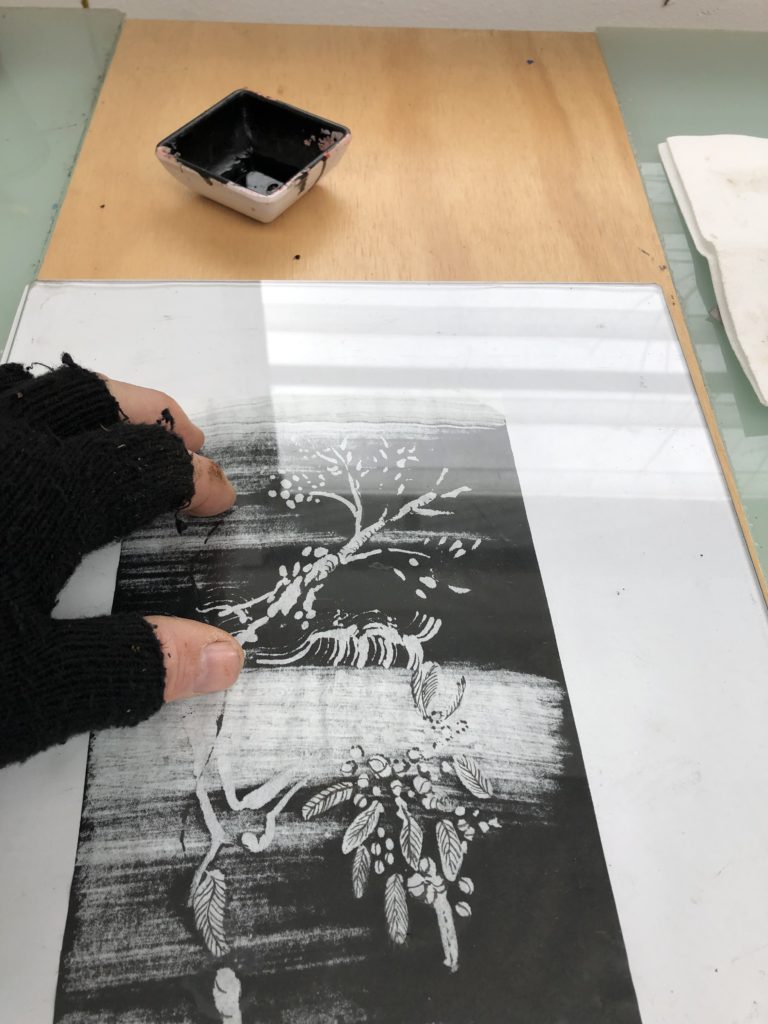
It’s a fine luxury to be in a position to work at unravelling your world view through your art and creativity without the threat of poverty or persecution. To gloss over the world with the pretty and decorative images is difficult for me to accommodate in my work. Yes, you can argue such art gives pleasure and respite to people’s daily grind. And I too enjoy the aesthetic satisfaction of imagery that pleases the eye as well as the mind. And so to another dilemma.Is exploring the not so nice realities of the world in an aesthetic coating any more noble?
The line walked is consuming-to make work that challenges my understanding of the world or offers a view that disrupts the status quo is a difficult line to follow as such work runs the risk of being visually too strong even for my lounge room wall or is misinterpreted and ignored when viewed in isolation without context. The large conte and pastel drawing below is an example. It is one of six from the Clifford series done in response to the Ti Tree shooting incident in central Australia in 1980.
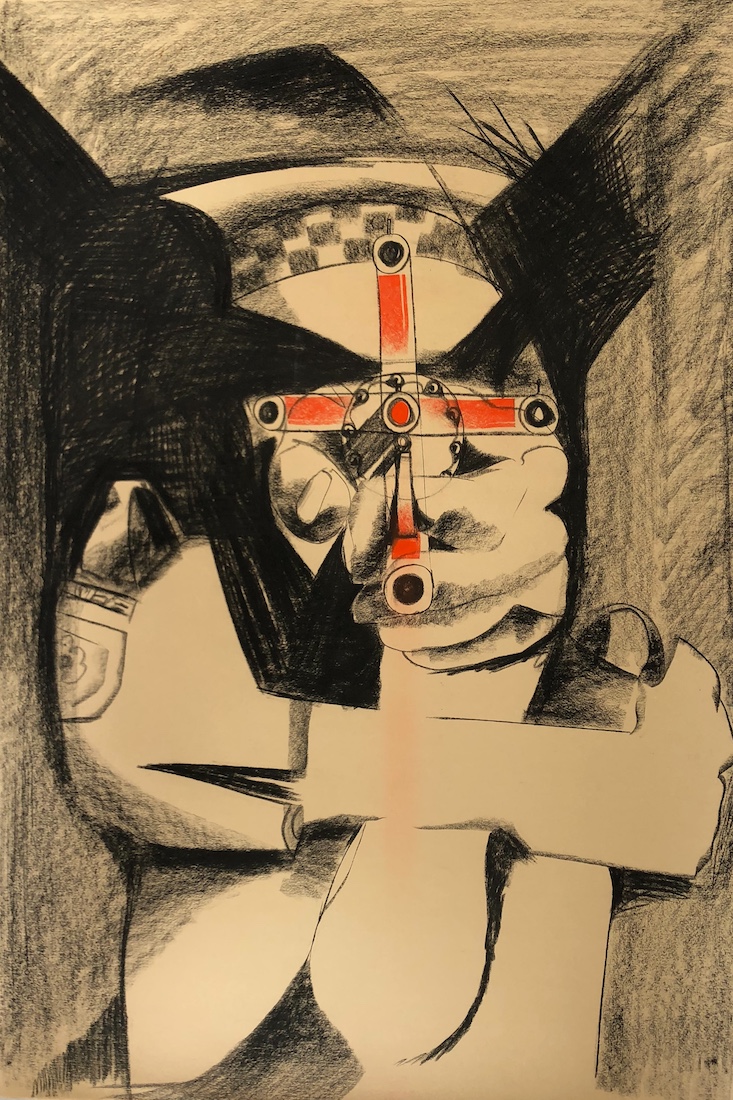
Part 2. Sorting the drawers:
I have always followed the old adage of shelving a drawing for a while before deciding to like it, rework it or destroy it. My collection of drawings and paintings have been carted across the country, from house to house, some now damaged or lost, others still unfinished.
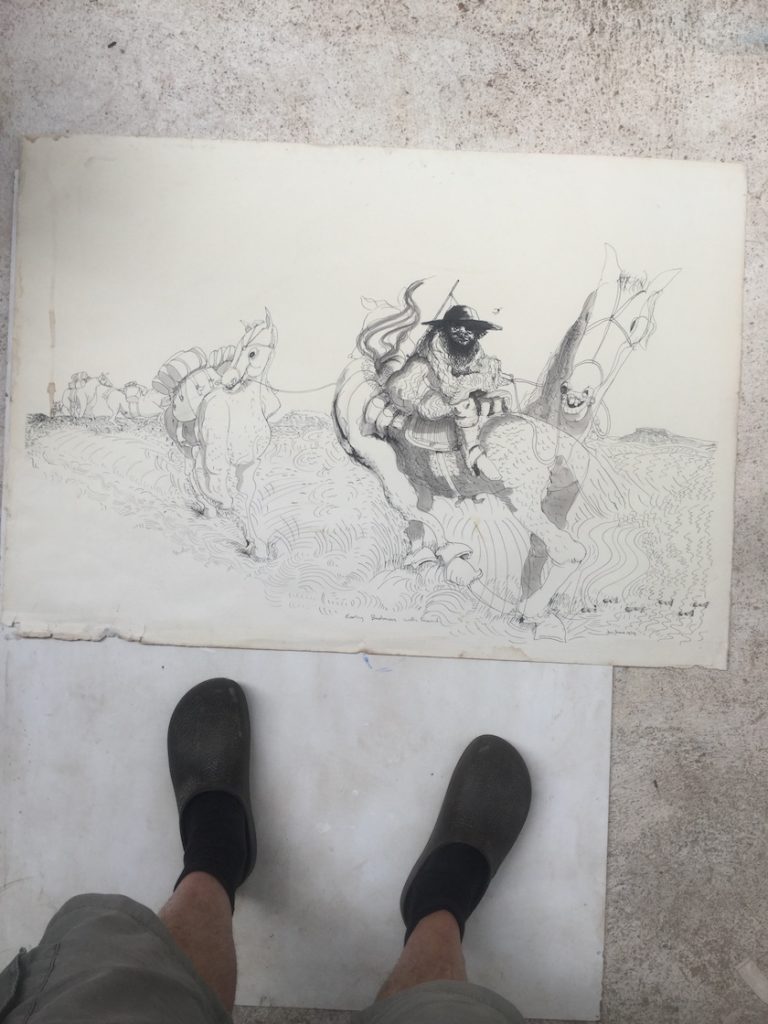
I have been working through the survivors e.g. the ‘Strutting cat‘ drawn in the 1980’s. It is now finally finished and reworked into the digital realm. Ok, it’s not disruptive art exploring injustices and the stupidity of every day life in this crazy world. But who can resist reviving a drawing a cat.
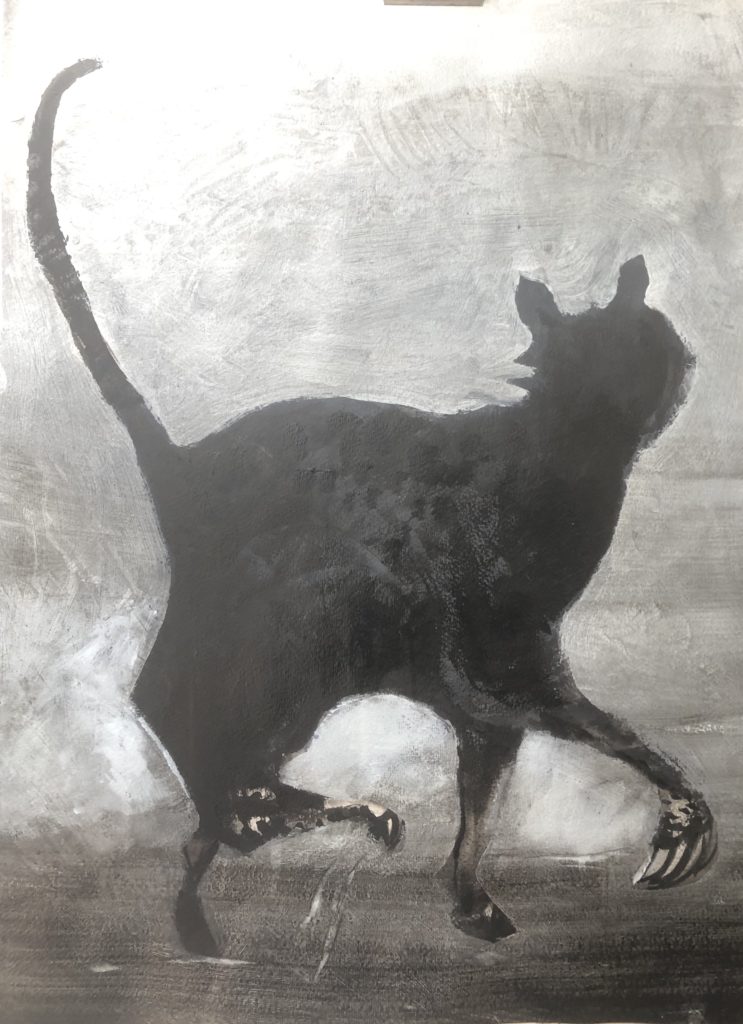
Acrylic and ink on paper. size 750 x1090 circa 1980
Digital version 2019
This is all part of clearing my unfinished work, cataloguing existing work and starting the new.
Note: The catalogue collection is in its raw state ready for further culling. All is exposed, soon to be curated. Let me know if there is a favourite or two. Also for those interested in the Creative catalog database contact Meccamedialight as they are trialling the service.
Part 3. Possibly to be continued in one form or another.
